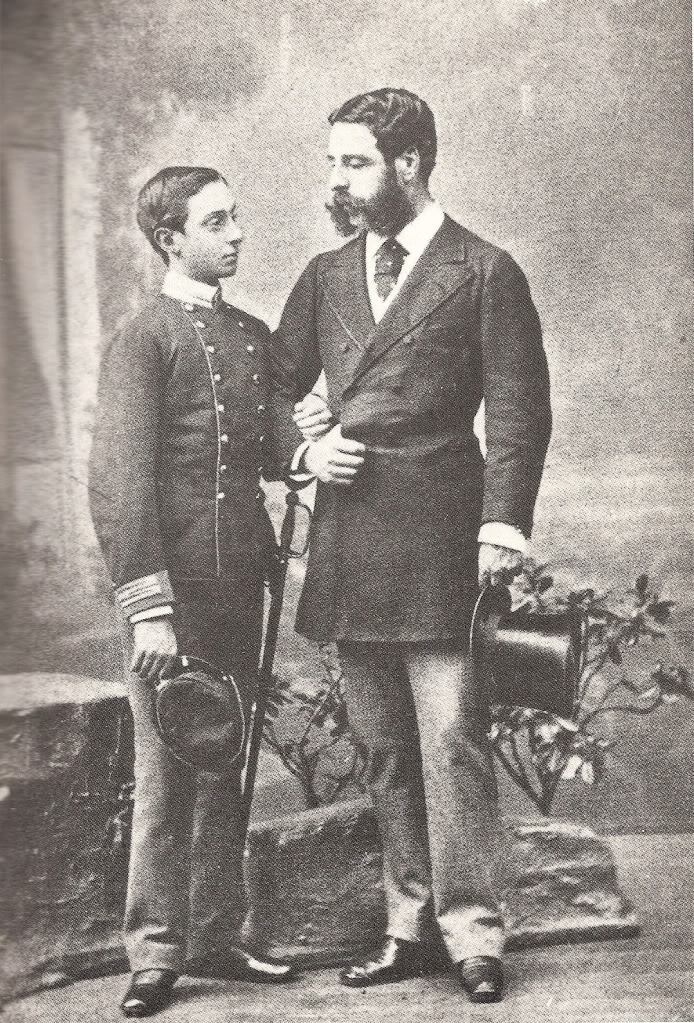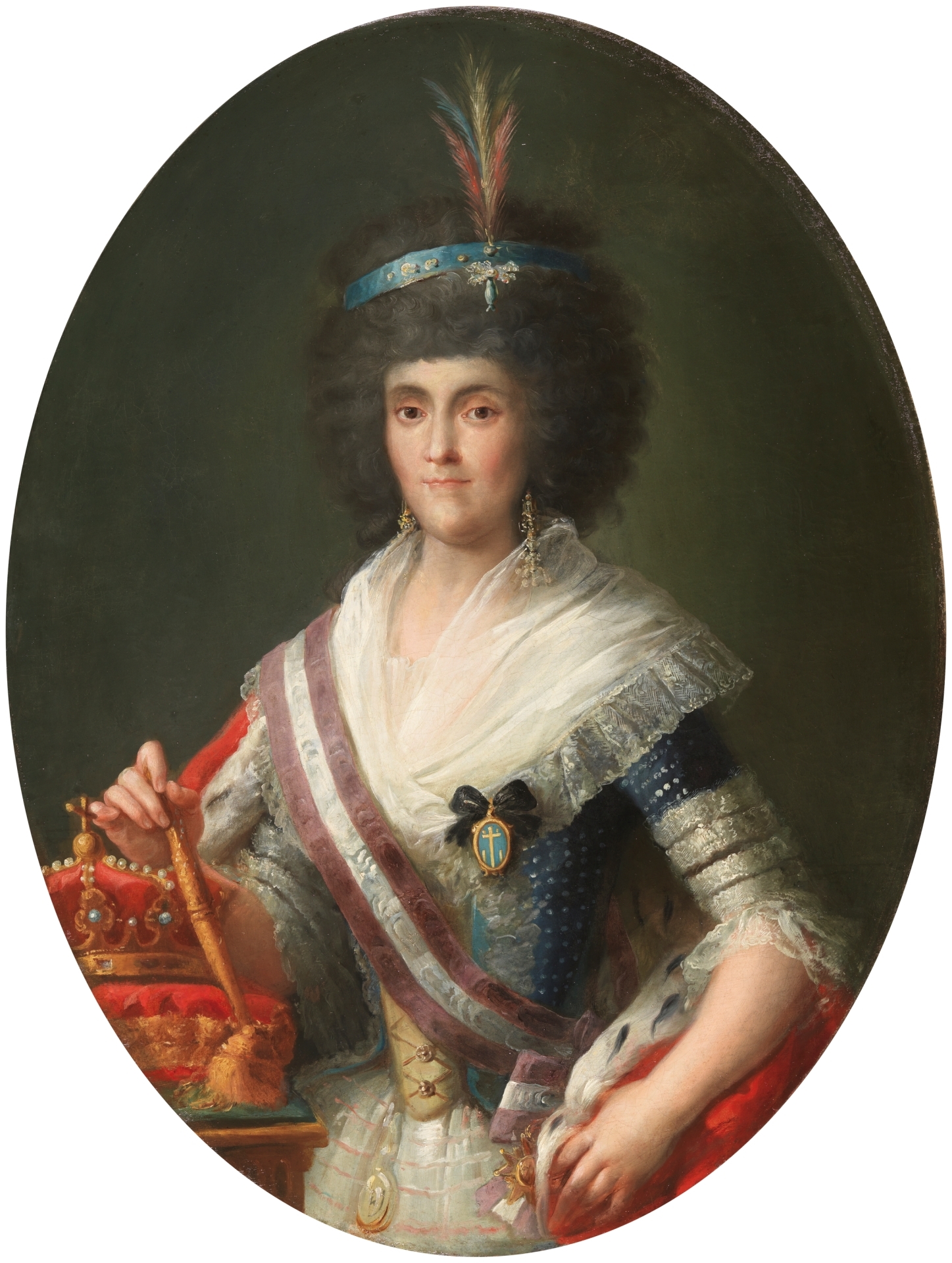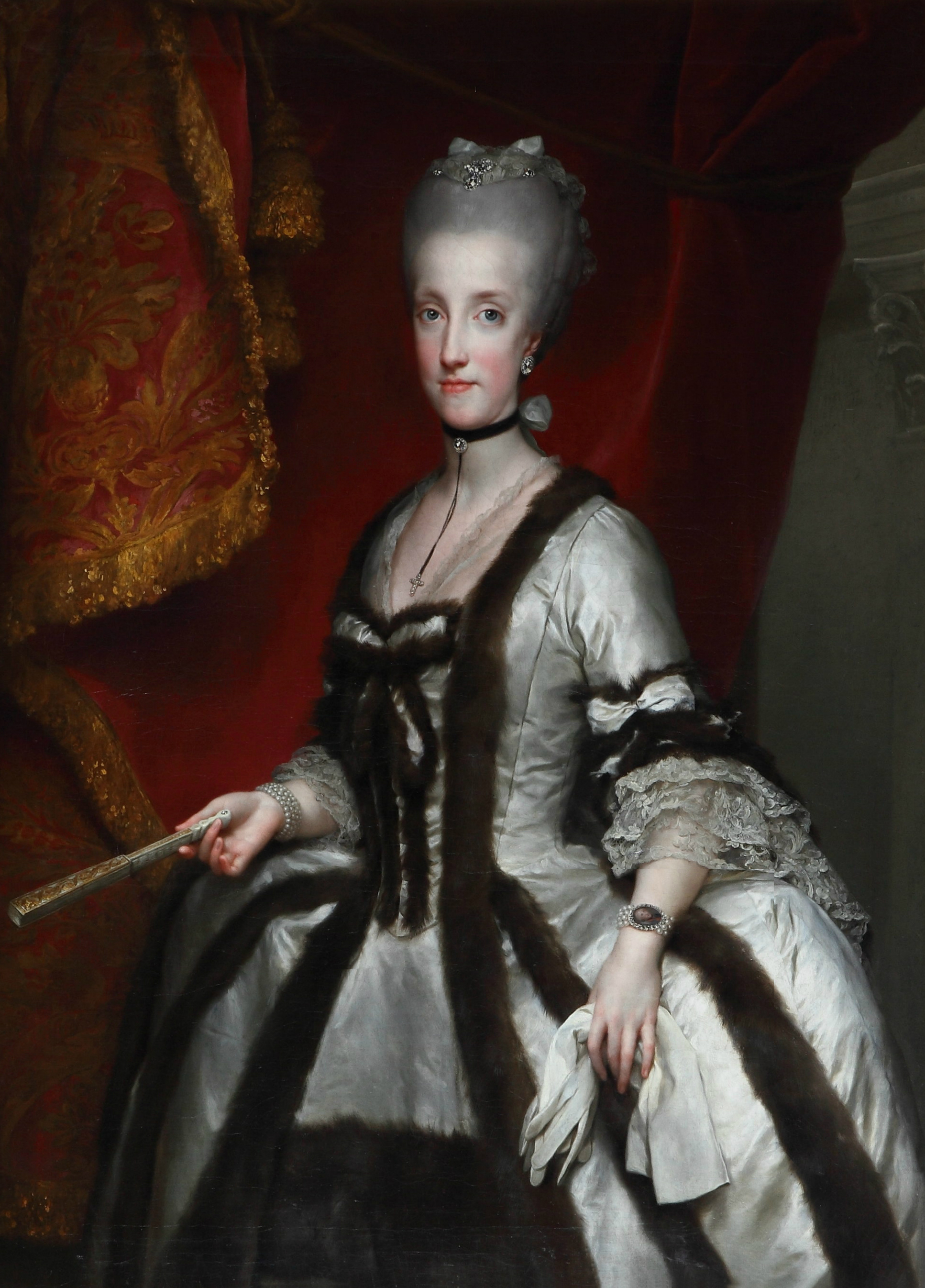|
Princess Maria Carolina Of Bourbon-Two Sicilies (1856–1941)
, title = Countess Maria Carolina Zamoyska , image = María Carolina 1856.jpg , caption = , reign = , coronation = , predecessor = , successor = , succession = , spouse = , issue = Countess Marie Josepha ZamoyskaCount Franz Joseph ZamoyskiCount Stanislaus ZamoyskiCountess Marie Isabelle ZamoyskaCountess Marie Therese ZamoyskaCountess Marie Karoline Zamoyska Count Jan Kanty Zamoyski , house = Bourbon-Two Sicilies , father =Prince Francis, Count of Trapani , mother = Archduchess Maria Isabella, Princess of Tuscany , birth_date = , birth_place = Naples, Kingdom of the Two Sicilies , death_date = , death_place = Warsaw, Nazi Germany Princess ''Maria Carolina'' Giuseppina Ferdinanda of Bourbon-Two Sicilies, full Italian name: ''Maria Carolina Giuseppina Ferdinanda di Borbone, Principessa delle Due Sicilie'' (21 February 1856, Naples, Kingdom of the Two Sicilies – 7 April 1941, War ... [...More Info...] [...Related Items...] OR: [Wikipedia] [Google] [Baidu] |
Jan Kanty Zamoyski
Count Jan Kanty Zamoyski (4 August 1900, in Stará Ľubovňa – 28 September 1961, in Monte Carlo) was a Polish aristocrat. He was the son of Count Andrzej Przemysław Zamoyski and Princess Maria Carolina of Bourbon-Two Sicilies, granddaughter of King Francis I of the Two Sicilies. He was owner of estates in Ľubovňa, Vyšné Ružbachy and Mníšek in Spiš. Marriage and issue Jan Kanty married Princess Isabel Alfonsa of Bourbon-Two Sicilies on 9 March 1929 in Madrid Madrid ( , ) is the capital and most populous city of Spain. The city has almost 3.4 million inhabitants and a Madrid metropolitan area, metropolitan area population of approximately 6.7 million. It is the Largest cities of the Europ ... and had four children: * Count Karol Alfons Zamoyski (28 October 1930 – 26 October 1979) * Countess Maria Krystyna Zamoyska (2 September 1932 – 6 December 1959) * Count Józef Michal Zamoyski (born 27 June 1935-22/23 May 2010) * Countess Maria Teresa Zamoysk ... [...More Info...] [...Related Items...] OR: [Wikipedia] [Google] [Baidu] |
Alfonso XII Of Spain
Alfonso XII (Alfonso Francisco de Asís Fernando Pío Juan María de la Concepción Gregorio Pelayo; 28 November 185725 November 1885), also known as El Pacificador or the Peacemaker, was King of Spain from 29 December 1874 to his death in 1885. After a revolution that deposed his mother Isabella II from the throne in 1868, Alfonso studied in Austria and France. His mother abdicated in his favour in 1870, and he returned to Spain as king in 1874 following a military coup against the First Republic. Alfonso died aged 27 in 1885, and was succeeded by his son, Alfonso XIII, who was born the following year. He is the most recent monarch of Spain to have died while on the throne. Political background, early life and paternity Alfonso was born in Madrid as the eldest son of Queen Isabella II on 28 November 1857. His official father, Isabella's husband Francisco de Asís, has been generally viewed as effeminate, impotent or homosexual, leading writers to question his biological pater ... [...More Info...] [...Related Items...] OR: [Wikipedia] [Google] [Baidu] |
Order Of Queen Maria Luisa
The Royal Order of Noble Ladies of Queen Maria Luisa is an Order created by King Charles IV of Spain by royal decree on April 21, 1792, at the request of his wife, Queen Maria Luisa, to reward noble women who distinguished themselves for their services and talents. As such, it was established as an honour reserved only for women. History The Order was defined as a strictly female reward system, ruled by the Queen and composed of thirty members reserved for the Spanish high nobility. The first secretary of the Order was Don Miguel de Bañuelos y Fuentes, retired Knight of the Order of Charles III, and General Stewart of the Army. In 1796 the King raised the Order to a nobiliary dignity, granting their holders and their spouses the protocolar treatment of excellence, equating to Grandee of Spain and Knights Grand Crosses of the Order of Charles III. Later, during the short reign of Joseph Bonaparte (Joseph I of Spain), a decree was signed on September 18, 1809, dissolving all ... [...More Info...] [...Related Items...] OR: [Wikipedia] [Google] [Baidu] |
List Of The Dames Of The Order Of Queen Maria Luisa
Ladies who have belonged throughout history to the Order of the Noble Ladies of Queen Maria Luisa are listed here. Currently and under the statutes in effect a single category is preserved, "Noble Lady", and the number remains limited to 30 holders, unless exceeded by the express will of the king. After Infante Juan of Spain, Count of Barcelona resigned his dynastic rights on 14 May 1977, during reigns of Juan Carlos I and Felipe VI no appointments have been made to the order, so although it formally remains in force, it can be considered that this order is dormant. Grand Mistresses *1792-1816: 1st Grand Mistress and 1st Dame Grand Cross. Queen María Luisa (wife of King Charles IV), née Princess Maria Luisa of Parma *1816-1818: 2nd Grand Mistress and 101st Dame. Queen Maria Isabel (2nd wife of King Ferdinand VII), née Infanta Maria Isabel of Portugal *1819-1829: 3rd Grand Mistress and 180th Dame. Queen Maria Josepha (3rd wife of King Ferdinand VII), née Princess Maria ... [...More Info...] [...Related Items...] OR: [Wikipedia] [Google] [Baidu] |
Princess Luisa Of Naples And Sicily
Luisa of Naples and Sicily (Luisa Maria Amalia Teresa; 27 July 1773 – 19 September 1802) was Grand Duchess of Tuscany as the wife of Ferdinand III, Grand Duke of Tuscany. She was born a princess of Tuscany as a daughter born to Ferdinand I of the Two Sicilies and Maria Carolina of Austria. Luisa had a rough correspondence with preeminent painter Élisabeth Vigée Le Brun—who was commissioned to paint portraits of Luisa and her elder siblings. Vigée Le Brun dubbed Luisa as the “most ugly” daughter of Ferdinand and Maria Carolina, and was even reluctant to finish her portrait. In matter of fact, many disliked Luisa’s appearance, and found her to be unattractive. Despite this, Luisa was known to be kindhearted to those around her. After eleven years of marriage, Luisa and her husband, Ferdinand, were unwillingly forced into exile upon the Treaty of Aranjuez in 1801. The couple soon fled to Vienna, Austria, where they would stay for nearly a year until Ferdinand ... [...More Info...] [...Related Items...] OR: [Wikipedia] [Google] [Baidu] |
Ferdinand III, Grand Duke Of Tuscany
Ferdinand is a Germanic name composed of the elements "protection", "peace" (PIE "to love, to make peace") or alternatively "journey, travel", Proto-Germanic , abstract noun from root "to fare, travel" (PIE , "to lead, pass over"), and "courage" or "ready, prepared" related to Old High German "to risk, venture." The name was adopted in Romance languages from its use in the Visigothic Kingdom. It is reconstructed as either Gothic or . It became popular in German-speaking Europe only from the 16th century, with Habsburg rule over Spain. Variants of the name include , , , and in Spanish, in Catalan, and and in Portuguese. The French forms are , '' Fernand'', and , and it is '' Ferdinando'' and in Italian. In Hungarian both and are used equally. The Dutch forms are and ''Ferry''. There are numerous short forms in many languages, such as the Finnish . There is a feminine Spanish, Portuguese and Italian form, . Royalty Aragón/León/Castile/Spain *Ferdina ... [...More Info...] [...Related Items...] OR: [Wikipedia] [Google] [Baidu] |
Maria Luisa Of Parma
Maria Luisa of Parma (Luisa Maria Teresa Anna; 9 December 1751 – 2 January 1819) was, by marriage to King Charles IV of Spain, Queen of Spain from 1788 to 1808 leading up to the Peninsular War. Her relationship with Manuel Godoy and influence over the King made her unpopular among the people and aristocrats. She was rivals with the Duchess of Alba and the Duchess of Osuna, attracting popular attention. The death of her daughter-in-law Princess Maria Antonia of Naples and Sicily, whom she disliked, was said to be the poisoning by the Queen. Life Early life She was the youngest daughter of Philip, Duke of Parma, the fourth son of Philip V of Spain, and Louise Élisabeth of France, the eldest daughter of King Louis XV. Born in Parma, she was christened Luisa María Teresa Ana after her maternal grandparents and her mother's favourite sister Anne Henriette of France, but is known to history by the short Spanish form of this name: María Luisa, while Luisa was the name she used i ... [...More Info...] [...Related Items...] OR: [Wikipedia] [Google] [Baidu] |
Charles IV Of Spain
, house = Bourbon-Anjou , father = Charles III of Spain , mother =Maria Amalia of Saxony , birth_date =11 November 1748 , birth_place =Palace of Portici, Portici, Naples , death_date = , death_place =Palazzo Barberini, Rome, Papal States , burial_place =El Escorial , religion =Roman Catholic , signature =Charles IV of Spain signature.svg Charles IV (Carlos Antonio Pascual Francisco Javier Juan Nepomuceno José Januario Serafín Diego) 11 November 1748 – 20 January 1819) was King of Spain and ruler of the Spanish Empire from 1788 to 1808. The Spain inherited by Charles IV gave few indications of instability, but during his reign, Spain entered a series of disadvantageous alliances and his regime constantly sought cash to deal with the exigencies of war. He detested his son and heir Ferdinand, who led the unsuccessful El Escorial Conspiracy and later forced Charles's abdication after the Tumult of Aranjuez in Marc ... [...More Info...] [...Related Items...] OR: [Wikipedia] [Google] [Baidu] |
Maria Carolina Of Austria
Maria Carolina Louise Josepha Johanna Antonia (13 August 1752 – 8 September 1814) was List of consorts of Naples, Queen of Naples and List of Sicilian consorts, Sicily as the wife of King Ferdinand I of the Two Sicilies. As ''de facto'' ruler of her husband's kingdoms, Maria Carolina oversaw the promulgation of many reforms, including the revocation of the ban on Freemasonry, the enlargement of the navy under her favorite, Sir John Acton, 6th Baronet, Sir John Acton and the expulsion of Spanish influence. She was a proponent of enlightened absolutism until the advent of the French Revolution, when, in order to prevent its ideas gaining currency, she made Naples a police state. Born an archduchess of Austria, the thirteenth child of Empress Maria Theresa and Francis I, Holy Roman Emperor, Emperor Francis I, Maria Carolina married Ferdinand as part of an Austrian alliance with Spain, of which Charles III of Spain, Ferdinand's father was king. Following the birth of a male heir in ... [...More Info...] [...Related Items...] OR: [Wikipedia] [Google] [Baidu] |
Ferdinand I Of The Two Sicilies
Ferdinand I (12 January 1751 – 4 January 1825) was the King of the Two Sicilies from 1816, after his restoration following victory in the Napoleonic Wars. Before that he had been, since 1759, Ferdinand IV of the Kingdom of Naples and Ferdinand III of the Kingdom of Sicily. He was also King of Gozo. He was deposed twice from the throne of Naples: once by the revolutionary Parthenopean Republic for six months in 1799 and again by Napoleon in 1805, before being restored in 1816. Ferdinand was the third son of King Charles VII of Naples and V of Sicily by his wife, Maria Amalia of Saxony. On 10 August 1759, Charles succeeded his elder brother, Ferdinand VI, becoming King Charles III of Spain, but treaty provisions made him ineligible to hold all three crowns. On 6 October, he abdicated his Neapolitan and Sicilian titles in favour of his third son, because his eldest son Philip had been excluded from succession due to imbecility and his second son Charles was heir-apparent to the S ... [...More Info...] [...Related Items...] OR: [Wikipedia] [Google] [Baidu] |
Princess Maria Antonia Of The Two Sicilies
it, Maria Antonietta Giuseppa Anna , image = Maria Antonia of the Two Sicilies by Morelli 1840.jpg , caption = Maria Antonia in the early 1840s, painted by Carlo Morelli , reign = 7 June 1833 – 21 July 1859 , spouse =Leopold II, Grand Duke of Tuscany(m. 1833 – 1870; his death) , issue = Archduchess Maria Isabella, Countess of Trapani Ferdinand IV, Grand Duke of Tuscany Archduke Karl Salvator Maria Luisa, Princess of Isenburg-Büdingen Archduke Ludwig Salvator Archduke John Salvator , house = Bourbon-Two Sicilies , father =Francis I of the Two Sicilies , mother =Maria Isabella of Spain , birth_date = , birth_place = Royal Palace of Palermo, Kingdom of Sicily, Italy , death_date = , death_place =Gmunden, Austria , place of burial = Imperial Crypt , religion = Roman Catholicism Princess Maria Antonia of the Two Sicilies (Maria Antonietta Giuseppa Anna; 19 December 1814 – 7 November 1898) w ... [...More Info...] [...Related Items...] OR: [Wikipedia] [Google] [Baidu] |
Leopold II, Grand Duke Of Tuscany
Leopold II( it, Leopoldo Giovanni Giuseppe Francesco Ferdinando Carlo, german: Leopold Johann Joseph Franz Ferdinand Karl, English: ''Leopold John Joseph Francis Ferdinand Charles''. (3 October 1797 – 29 January 1870) was Grand Duke of Tuscany from 1824 to 1859. He married twice; first to Maria Anna of Saxony, and after her death in 1832, to Maria Antonia of the Two-Sicilies. By the latter, he begat his eventual successor, Ferdinand. Leopold was recognised contemporarily as a liberal monarch, authorising the Tuscan Constitution of 1848, and allowing a degree of press freedom. The Grand Duke was deposed briefly by a provisional government in 1849, only to be restored the same year with the assistance of Austrian troops, who occupied the state until 1855. Leopold attempted a policy of neutrality with regard to the Second Italian War of Independence, but was expelled by a bloodless coup on 27 April 1859, just before the beginning of the war. The Grand Ducal family left for B ... [...More Info...] [...Related Items...] OR: [Wikipedia] [Google] [Baidu] |
_-_ribbon_bar.png)







